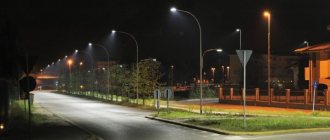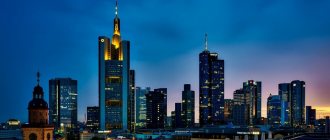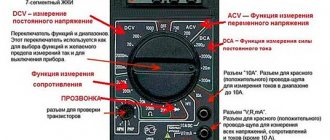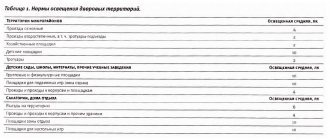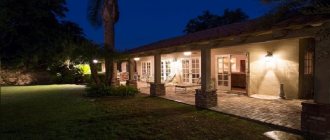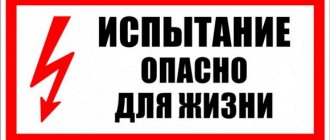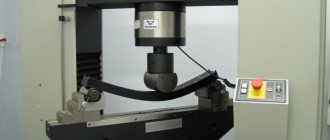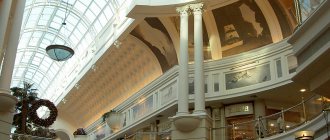How to measure ripple factor?
Experiments have confirmed that light inevitably affects our well-being. Low lighting in the workplace is a common cause of health problems, decreased concentration, mental problems, and decreased performance.
Excessively bright light, on the contrary, is an irritant and can cause stress.
The best solution is to provide the right lighting to ensure optimal performance.
Normal lighting levels are clearly regulated for each type of premises. These parameters have their own rules and regulations that you need to know about.
In this case, the sanitary-epidemiological service assumes the control function.
Legislation
There are legislative acts that specify standards for lighting the work area. Thus, the requirements for workplace lighting can be found in:
- in GOST 55710-2013, SP 52.13330.2016 (updated edition of SNiP 23-05-95) - these standards are also used in the design of premises;
- SanPiN 2.2.1/2.1.1.1278-03 applies to the organization of workplaces in already constructed buildings. It is important to know that regulatory inspections are carried out for compliance with SanPiN.
SNIP
Building codes and rules for lighting design are a set of regulatory documents in the field of construction, adopted by executive authorities and containing mandatory requirements, which include 4 parts:
- General provisions.
- Design standards.
- Rules for the implementation and acceptance of work.
- Estimated rules and regulations.
SanPiN
Sanitary rules and regulations cover a huge area of influence. The requirements of SanPin must be taken into account when developing SNiP, technical and regulatory documentation and agreed with the State Sanitary and Epidemiological Service of the Russian Federation. SanPin applies both to existing production facilities and to the design and operation of enterprises and buildings under construction.
Sanitary norms and rules impose serious requirements for ensuring human living conditions and establish a standard for the safety of environmental factors. These requirements must be taken into account when developing SNiP, regulatory and technical acts, and also be agreed upon with the State Sanitary and Epidemiological Supervision of the Russian Federation.
Documentary basis
The calculation of illumination standards is regulated by several legal acts. The most important document is SNiP. There are also SanPiN, MGSN (Moscow City Building Standards), as well as a large number of regional (for each subject of the Russian Federation) and industry documents, acts, etc.
Indoor illumination: how is it measured?
The nominal illumination of a room in numerical terms is the luminous flux that falls on a plane at an angle of 90 degrees per unit area.
If the light falls at an acute angle, then the illumination parameter will change.
The resulting indicator will decrease in direct proportion to the angle mentioned above.
The unit of illumination level measurement is lux. In this case, one lux is equal to one unit of luminous flux (lumen) per square meter.
If we consider a physical unit system, then the unit of measurement of illumination is phot. In this case, 1 photo = 10,000 lux.
The illumination parameter will change in proportion to the intensity of light emanating from the source itself. The further away the illuminated object is, the lower its illumination.
For example, in the USA and England the unit of illumination is different. There it is customary to use the “foot-candle”. This setting represents that the light intensity that is equal to one candela illuminates an object one foot away from the light source.
In theory, several other types of units of measurement are used, but, as a rule, they are outdated, not recognized by the international system, or are simply derivatives of the main parameter (lux).
What information is contained in the light measurement protocol
The company conducting the measurements draws up the protocol form independently. The document will need to provide the following information:
- The name of the organization that conducts the inspection and its details (legal address, telephone number, tax identification number, checkpoint, information about the accreditation certificate or other documents permitting activities).
- The name of the document, its number and date of preparation.
- Date and time of illumination measurements.
- Place of illumination measurements (address and name of the institution).
- Basis for taking measurements: agreement with the institution. You will also need to provide his details.
- Premises where the inspection was carried out: offices, workshops, etc.
- Additional Information. You can indicate what voltage was in the network, what kind of lighting was in the room, whether there was furniture there, etc.
- Full name and position of the employee who carried out the measurements.
- Full name and position of the responsible employee in whose presence the measurements were taken.
- Name of measuring instruments and data on their verification.
- Regulatory and technical documentation according to which measurements were carried out and a conclusion was given.
- Illumination measurement results. This item can be presented in the form of a table with the following columns: serial number, location of measurements, category of visual work, lighting system (types of lamps), measured illumination, permissible illumination.
At the end of the document, the employee who carried out the measurements and filled out the protocol, and the employee of the institution where the inspection was carried out, must sign.
The protocol is also accompanied by an expert’s opinion on the state of illumination in the institution, and a diagram of the location of illumination measurement points.
Measuring room illumination: basic methods and instruments
To determine the level of illumination, you can use one of the following devices - flash meter, exposure meter and light meter, lux meter or photometer.
The main device from this group, capable of displaying the real illumination parameter (natural or artificial) is a lux meter.
They are analog and electronic. Analog devices are no longer produced, only rarities remain.
It can be used to solve the following problems:
- measuring lighting levels during certification (inspection) of workplaces;
- taking illumination indicators and comparing them with calculated parameters when performing work on the installation of lighting elements;
- monitoring compliance of the level of illumination in certain premises with current standards;
- analysis of illumination parameters for compliance with design parameters during the period of installation of lighting elements.
The light meter itself works on a simple principle. A photocell is built inside the device. When a light beam is directed at it, a powerful flow of electrons is released inside the semiconductor element.
The result is the appearance of an electric current. The magnitude of the latter is proportional to the strength of the light that illuminates the photocell of the device.
As a rule, it is this parameter that is reflected on the instrument scale.
Depending on the type of fixation of the control element (sensor), the lux meter is of two types:
- rigid fixation of the sensor (performed in the form of a solid device, monoblock);
- with a remote-type sensor, which is connected using a flexible cable.
To carry out simple measurements, the simplest device is enough - a lux meter in the form of a monoblock, without additional options.
If you need to clarify a larger number of parameters when conducting professional research, then it is better to use more complex devices - with the option of calculating the average parameter and built-in memory.
A big plus is the use of special light filters in the luxmeter. With their help, you can more accurately calculate the luminous intensity parameter coming from lighting fixtures with different shades of color.
In addition, devices with a remote sensor show greater measurement accuracy, because they are less affected by external factors.
In turn, the presence of an LCD display on modern models greatly simplifies the process of taking readings from the device.
Instruments such as exposure meters and exposure meters are used in photographic equipment.
Their task is to record the parameters of exposure illumination and brightness. Knowing the value of these indicators, the photographer can achieve ideal photo quality.
In turn, exposure meters are available in two types. They are external and internal.
The task of a flash meter is to measure the level of illumination during the photography process. Pulse-type lighting devices are used as auxiliary elements.
New cameras already have a built-in flash meter. Its task is to regulate the power of the flash depending on the lighting level.
Types of lighting
There are different classifications of lighting. So, according to localization, it can be of the following types:
- General. Assumes uniform lighting of the room without the presence of dark or lighter areas. The presence of only such lighting is usually observed in areas where the work process is carried out part-time.
- Local. Local lighting helps to additionally illuminate certain work areas: a computer or school desk, equipment and machines. It involves the installation of various lighting fixtures in close proximity to the workplace.
According to the standards, the use of exclusively local lighting is unacceptable, since there will inevitably be differences in light in the room - from deep darkness to bright light. This will cause vision problems for workers. Based on light sources, lighting is also divided into several types.
Natural
Natural lighting is created by the forces of nature: direct sunlight, as well as diffuse (reflected) light from the sky. The lack of natural light is unfavorable for a person, because it is to it that the eyes are best adapted. Such light depends on the time of year and period of day, this is its main drawback. But the quality and volume of incoming natural light also depends on the design of the building, the number and size of windows.
Natural light is measured by KEO - natural light coefficient. It is equal to the ratio of illumination in a building and illumination in an open area in clear weather. There are more KEOs in the southern regions than in the northern ones.
There is even a special light climate map, consisting of 6 zones, according to which windows in buildings should be designed. Natural light is divided into the following types:
- upper (light penetrates through openings in areas with differences in height of the house);
- side (light enters through the windows of the external walls);
- combined (combination of the two previous types).
Artificial
Without artificial lighting at twilight, on a cloudy day or in winter, when it gets dark early, normal work processes are impossible. Additional light sources include lamps, lamps, floor lamps, sconces and other electrical appliances. Usually, halogen and LED lamps are purchased for offices and production. Conventional incandescent light bulbs are now rarely used, since they waste a lot of electricity and quickly break down.
Most often, lighting is mixed, when natural is combined with artificial. The latter is also divided into the following types:
- Working. Regular lighting, which is used daily by employees, helps ensure the workflow.
- Emergency. It turns on only in case of an accident, in an emergency situation, when the main lighting is turned off.
- Evacuation. It is used to illuminate evacuation routes for people in emergencies; it is usually not as powerful as a working one.
- Security. Used by security personnel, it is not present at all enterprises, but when necessary. Not standardized by intensity.
- On duty. Remains on even after the end of the work process (for example, small lighting of corridors in large buildings).
Hybrid lighting
Hybrid systems are systems that include natural and artificial lighting. They are suitable for cases in which sunlight alone is not enough to create an adequate level of illumination. When determining the luminous flux value, natural lighting is not taken into account - calculations are performed only for electrical sources.
The need for hybrid lighting appears if the KEO value is below the permissible value - 1 or 1.2%. If this indicator, depending on shading, type of glass and window width, does not meet the norm, artificial lighting is installed in the workplace along with natural lighting. Light sources are installed only in those areas where the CEC is below normal.
Consequences of improper lighting
Failure to comply with the lighting requirements for workplaces at any enterprise is fraught with a decrease in overall performance. In addition, the staff's vision becomes tired, a direct threat to health arises, and even the development of myopia is possible. At enterprises where management is negligent in complying with the above requirements, the risk of occupational injuries increases, and the number of defects may also increase. It is not uncommon for staff turnover to occur. After all, many people are attentive to their own health, and sometimes vision turns out to be more valuable than a position or having a job.
Requirements for workplace lighting must, of course, be strictly observed. After all, people, as a rule, spend most of their lives at work or in enclosed spaces, where improper lighting can undermine their health.
The presence of artificial light is a mandatory measure that promotes safety and productivity. The choice of the method of arranging lighting fixtures and their type help relieve visual stress. The right approach means satisfied employees and quality products.
Illumination pulsation coefficient: essence and norms
It is no secret that all lighting devices emit an uneven luminous flux, having a different number of vibrations. This effect is hidden from view, but its effect on human health is very significant.
At the same time, the danger of light lies precisely in the fact that it cannot be recognized, but the result of the action can be sleep disturbance, weakness, depression, heart failure, discomfort, and so on.
Lighting pulsation coefficient is a parameter that reflects the force of change in the luminous flux directed per unit surface in a certain time period.
The coefficient is calculated using a simple formula - the maximum illumination parameter in a certain period of time “minus” the minimum indicator for the same period of time.
The resulting number must be divided by the average illumination parameter and multiplied by 100%.
It is worth considering that existing sanitary rules set an upper limit on the pulsation coefficient parameter.
Where the workplace is organized it should not be higher than 20%. Moreover, the more responsible the employee’s type of activity, the lower this parameter should be.
So, for office premises and administrative buildings, where intense visual work is involved, the pulsation coefficient should not be more than 5%.
In this case, the light flux with pulsations up to 300 Hz is taken into account, because a higher frequency parameter is simply not perceived by the human body and cannot have any effect on it.
Order of conduct
To organize such a check at an enterprise or company, you need to enter into an agreement with an organization that has the right to conduct light measurements. Next, select the date for the measurements.
On the appointed day, a specialist goes to the organization with all the necessary equipment and takes measurements. A responsible employee of the company, appointed by order of the manager, must be present during the procedure. Based on the results of the procedure, a protocol of illumination measurements and a conclusion are drawn up. Documents can be issued for each premises or for the entire facility.
For your information! Measurements are carried out with a lux meter - a mobile portable device. Measurements are carried out using artificial and natural lighting.
Ripple coefficient: measurement features
To determine the frequency of lighting pulsation, you can use a simple and effective device - an illumination, pulsation and brightness meter.
Its functionality allows you to determine:
- brightness level of monitors and artificial lighting devices;
- room illumination level;
- pulsations of illumination of all types of monitors;
- pulsations of light waves that appear when different lamps flicker.
The operating principle of the main group of devices (pulse meter, brightness meter and lux meter) is to control the light level using a photosensor, after which the signal is converted and the result can be seen on the LCD display.
Luxmeter-Pulsemeter-Brightness meter Ecolight-02.
To determine the pulsation coefficient, you can go in two ways - conduct an independent analysis or use a computer program.
The most popular devices for calculating pulsations are “Ecolight - 01 (02)” and “Lupin”. If you need to analyze data on a computer, you can use special software - Ecolight-AP.
The main difference between devices for measuring pulsations is the quality of photocells, the type of power sources (batteries) and the level of sensitivity.
LED lamps have the maximum pulsation coefficient (sometimes this parameter can reach 100%). Incandescent and fluorescent lamps have a lower ripple factor.
For example, the former have a pulsation coefficient of no more than 25%. At the same time, the quality and price of the light source are not important, because even expensive lamps can have a high pulsation coefficient.
General recommendations
There are several basic lighting requirements:
- Uniformity - the main lamps on the ceiling should be located at the same distance from each other;
- Lamps should have frosted glass - this makes the light less dazzling;
- Maximum reduction of pulsation - LED lamps are used for this purpose;
- Lamp color rendering - this is done using the color temperature indicator. The lower it is, the closer the color of the lamp is to the natural color of the sun; high temperature means bright blue lamps. The optimal indicator for work is 4000K, for rest – 2000-3000K.
Temperature in the office according to sanitary standards
Local lighting, if the worker needs it, is installed on the side of the workplace, on the left for a right-handed person and on the right for a left-handed person. The table should have a matte surface and absorb light so as not to create glare.
Important! Local light should not sharply contrast with the general light in the room, so as not to cause eye strain.
Poor lighting is hazardous to health
Illumination standards
Today, each type of room has its own standard of illumination, as well as maximum permissible pulsation coefficients.
For example, for a sales area in a grocery store, the maximum pulsation coefficient parameter is 15%, and the illumination level is 300 lux, for the department of building materials, sporting goods and plumbing - 10% and 200 lux, for the kitchenware department, toy and clothing store - 20% and 200 lux, for fitting rooms - 20% and 300 lux and so on.
Accordingly, there are specific lighting standards for kindergartens, residential premises, medical institutions, car washes, and so on.
Further, all lighting standards are displayed in tables.
Read on the topic: How to find out the level of illumination in rooms.
European lighting standards and their comparison with Russian ones
Most often, standards in Europe are an order of magnitude higher than in Russia.
Comparison table of key indicators in office premises.
| Room type | Norm in Russia (Lk) | Norm in Europe (Lk) |
| Archive | 75 | 200 |
| Stairs | 50-100 | 150 |
| Rooms for working with documents and using a computer | 300 | 500 |
| Open plan offices | 400 | 750 |
| Design and drawing rooms | 500 | 1500 |
Video lecture: Lighting regulation.
Lighting standards are mandatory both in production or in the office, and at home. All of them are selected to ensure maximum visual comfort when performing certain tasks.
How to reduce lighting pulsation?
In recent years, increasing importance has been given to the control of pulsation emanating from lighting sources.
If these parameters are overestimated, all measures are taken to normalize (reduce) them.
This is implemented using one of the following methods:
- Using lighting devices powered by alternating current (frequency must be greater than 400 Hz).
- Installation of a compensating ballast device into the luminaire, as well as connection of offset lamps. The first lamp is characterized by lagging current, and the second - leading.
- Installation of simple lamps on different phases (a three-phase network is required).
- Application of lamps with electronic ballasts.
The choice of one of the options with which you can achieve the optimal ripple coefficient parameter depends on the implementation conditions for each specific case.
Important aspects for optimal office lighting
- The main task of lighting is to provide comfortable working conditions, and not the beauty of the embodiment.
- Competent implementation of not only lighting standards, but also all other technological characteristics.
- The best choice is LED lamps: reduced costs for paying for consumed electricity, better energy efficiency, the ability to adjust the brightness and shade of the glow.
- The multi-layer lighting system is an effective combination of main, local and accent lighting.
- The use of monitors with anti-glare screens.
- Ease of access for replacement and repair of lighting fixtures.
